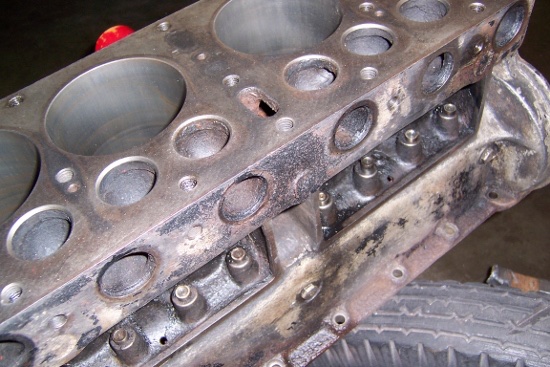Page 1 of 1
Canan expert post a good condition valve seat picture?
Posted: Mon May 20, 2019 7:52 am
by Dave_Kriegel
I have gotten a great deal of good advice on doing a job I have never done - repairing the block valve seats before putting in new valves. From the picture posted it seems to me the block is the problem with my very low cylinder compression despite just carefully fitting new piston rings. When I do 300 lap strokes, I feel resistance, grinding of the valve against the block surface only 30 percent of the rotation. I do not want to have valve insets done but am buying the required grinding resurfacing tool hopefully today. Members have told me the correct dimensions to cut and why. A retired machinist will watch me so I do not screw up. Does anyone have a picture of what a great valve seat in the block should look like after resurfacing? Picture is before I started lapping but I have NO bright metal on the valve nor block after 300 back and forth rotations
Re: Canan expert post a good condition valve seat picture?
Posted: Mon May 20, 2019 8:13 am
by Ruxstel24
I don't have a picture, your's is not great...
The surface doesn't get shiny, more like grey.
Are you sure the valve/lifter is all the way closed ?
Re: Canan expert post a good condition valve seat picture?
Posted: Mon May 20, 2019 9:24 am
by DanTreace
Best results from valve grind with paste is for an engine with very good seats. If the old engine has the valve heads sunk flush with the block, then too far gone to do any paste grinding.
This '23 is candidate for fitting new valves and grinding faces of valves to fit the somewhat worn but usable valve seats. Could be satisfactory runner.

- Before Grind100_3087 (550x367).jpg (122.31 KiB) Viewed 2436 times
But due to the planned use, and the worn cupped lifters, better to just spend the $ and do it right with new seats and cut faces, they are narrow as needed to have the best valve seat for best performance.
IF you are to do a re-fresh valve job, where the seats aren't worn down, the valves still stand up on the block face, and the valve seat is fairly narrow, not super wide as with a well worn valve seat. then paste grinding can clean up the face of the valve.
Have done this, and works good with a nice older motor that already had steel valves (no original iron/steel). Used this set up, a suction cup twister, and a coil spring to place under the valve head, riding in the valve chamber. You want the spring to bounce the valve head back up, as you twist the the valve back and forth, in just short oscillations. Don't paste grind in a circle, that will make grooves you don't want. Photo shows a two-piece valve just for illustration.